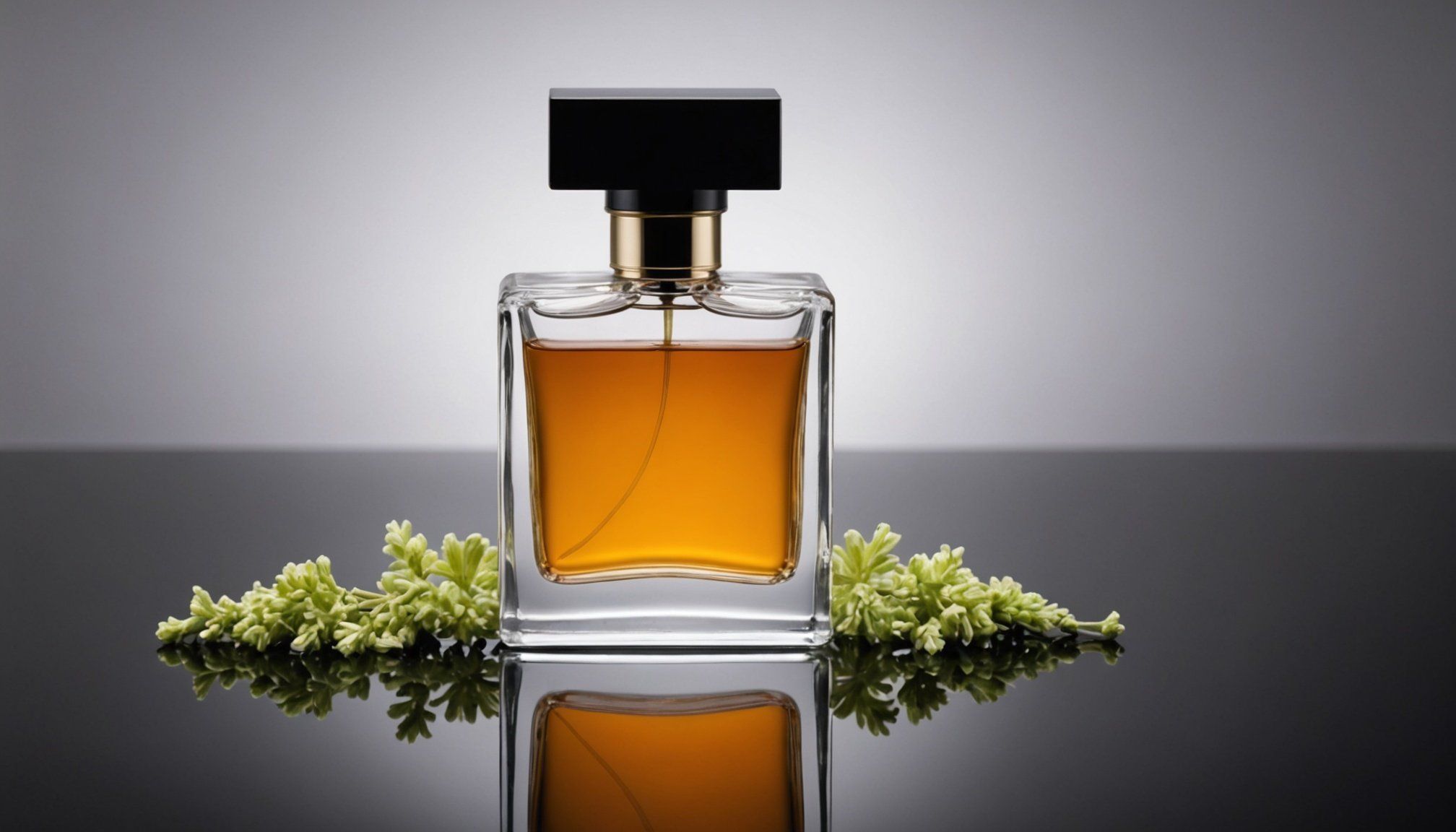Exploring Modern Perfumery: The Artistry and Science Revealed
In the intricate world of perfumery, the creation of fragrances is a blend of art, science, and a deep understanding of human emotions. To delve into the heart of modern perfumery, let’s start with the foundation of this ancient yet ever-evolving craft. For a deeper look into the educational aspects of perfumery, you can visit resources like this archive on artistic education.
What is a “Nose” in Perfumery?
In the perfume industry, the term “nose” is a respectful way to refer to a master perfumer. This individual is part artist, part scientist, combining a highly developed sense of smell with deep technical expertise to create, evaluate, and refine fragrance compositions1.
Also to read : 10 powerful product advertisement examples to inspire your sales
Core Responsibilities of a Nose
- Ingredient Selection: A nose carefully curates each raw material, from natural botanical extracts like jasmine or oud to modern synthetics.
- Fragrance Formulation: They blend top, mid (heart), and base notes in precise ratios, constantly testing and adjusting to achieve the right balance.
- Evaluation & Fine-Tuning: After initial trials, the nose revisits the scent over hours or days, identifying subtle tweaks to perfect the final formula.
The Artistry Behind Perfume Creation
Perfumery is an art form that has been refined over centuries. Here are some key aspects that highlight the artistic side of perfume creation:
Historical Roots
Perfumery has its roots in ancient civilizations, such as Egypt, where fragrances were used in religious rituals and personal grooming. The art of perfumery was further refined by the Romans and later by Islamic cultures, who introduced advanced distillation techniques and new raw materials5.
This might interest you : Unlocking the secrets: the science behind modern perfumers
Influence of Fashion Design
In modern times, fashion designers have significantly influenced the world of perfume. Iconic fashion houses like Chanel, Givenchy, and Dior have created signature fragrances that have become cultural milestones. For example, Chanel No. 5, launched in 1921, remains one of the most recognizable perfumes globally, embodying the spirit of elegance and sophistication4.
The Science of Perfumery
While perfumery is an art, it is also deeply rooted in science.
Understanding Fragrance Notes
Fragrances are composed of top notes, heart notes, and base notes. Here’s a breakdown of each:
- Top Notes: These are the initial scents perceived upon application, often fresh and light.
- Heart Notes: Also known as middle notes, these emerge once the top notes dissipate and form the core of the fragrance.
- Base Notes: The final layer, base notes provide depth and richness to the scent, lingering on the skin for hours4.
Chemistry Behind Fragrance Creation
A great perfumer must understand the chemistry behind how ingredients interact. This includes knowing the volatility, character, and synergy of each note. For instance, the Persian Muslim doctor and chemist Ibn Sina (Avicenna) introduced the process of extracting oils from flowers by means of distillation, a procedure still commonly used today5.
The Role of Master Perfumers
Master perfumers are the heart and soul behind every memorable scent. Here are a few notable examples:
Jean-Claude Ellena
Known for his minimalistic and transparent compositions, Jean-Claude Ellena has created iconic fragrances like Terre d’Hermès and Un Jardin sur le Nil for Hermès. His signature style highlights the purity of each note1.
Francis Kurkdjian
Francis Kurkdjian is renowned for his contemporary and refined creations, often with a memorable and innovative twist. His notable works include Le Male for Jean Paul Gaultier and Baccarat Rouge 540 for Maison Francis Kurkdjian1.
Christine Nagel
Christine Nagel’s style is characterized by a harmonious blend of classic foundations and playful modern accents. She has created fragrances like Si for Giorgio Armani and Twilly d’Hermès for Hermès1.
The Making of a Nose
Becoming a master perfumer is a rigorous process that involves several key steps:
Formal Education
Many noses begin with specialized perfumery programs that cover raw materials, chemistry, and creative formulation. Institutions like ISIPCA in Versailles, France, are highly regarded for their comprehensive training1.
Apprenticeship & Mentoring
Trainee perfumers learn directly under established masters, developing their ability to identify, describe, and manipulate aromas at various stages of a fragrance’s life. This hands-on training is crucial for mastering the craft1.
Mastering Raw Materials
A professional nose maintains a mental “library” of smell references, understanding each note’s volatility, character, and synergy with other ingredients. This expertise allows them to create complex and balanced fragrances1.
The Influence of Arab Perfumes on Modern Perfumery
Arab perfumes have had a profound influence on the global perfume industry.
Historical Contributions
During the Golden Age of Islamic Civilization, Arabian alchemists like Al-Kindi and Avicenna pioneered the extraction of oils and essences. Their innovations in distillation techniques and the introduction of new raw materials have greatly influenced Western perfumery2.
Modern Impact
Ingredients like oud, musk, rose, and jasmine, which originated in the Arabian world, are now integral to luxury perfumes worldwide. Oud, in particular, has transitioned from a traditional Middle Eastern scent to a coveted ingredient in Western perfumery, symbolizing the blend of Eastern opulence and Western sophistication2.
Scent Marketing in Modern Business
Scent marketing, or scent branding, is a strategic use of fragrance to create emotional connections between a brand and its customers.
The Power of Scent
Scent marketing involves harnessing the primal power of scent to captivate the senses, shape behavior, and forge unbreakable connections. Companies like Maison 21G use cutting-edge neuroscience research and precision diffusion technology to create bespoke fragrances that align with a brand’s values and target audience3.
Creating Immersive Experiences
Maison 21G crafts environments where every note of fragrance is evenly and elegantly dispersed, enveloping the space in a harmonious olfactory ambiance. This approach ensures that each corner exudes a consistent aroma, transforming the atmosphere into an immersive sensory haven3.
Practical Insights and Actionable Advice
For those interested in exploring the world of perfumery, here are some practical insights and actionable advice:
Understanding Your Olfactory Preferences
- Experiment with Different Fragrances: Try various types of perfumes to understand what you like. Pay attention to the top, heart, and base notes.
- Keep a Fragrance Journal: Record your impressions of different fragrances to develop your own olfactory library.
Creating Your Own Fragrances
- Start with Simple Blends: Begin with basic fragrance combinations and gradually experiment with more complex blends.
- Use High-Quality Ingredients: Invest in pure essential oils and aroma compounds to ensure the best results.
Modern perfumery is a vibrant blend of art and science, where master perfumers weave complex scent stories that evoke emotions and spark imagination. From the historical roots of perfumery to the modern techniques of scent marketing, the world of fragrances is a rich tapestry that continues to captivate and inspire.
Key Takeaways
Here are some key points to remember about modern perfumery:
- Master Perfumers: These are the artists and scientists behind every memorable scent, combining creativity with technical expertise.
- Fragrance Notes: Understanding top, heart, and base notes is crucial for appreciating and creating fragrances.
- Historical Influence: Arab perfumes and other ancient traditions have significantly influenced modern perfumery.
- Scent Marketing: This is a powerful tool for creating emotional connections between brands and customers.
By appreciating the artistry and science behind perfumery, we can better understand the intricate world of scents and the masterful craft that goes into creating each fragrance.
Detailed Bullet Point List: The Process of Becoming a Master Perfumer
- Formal Education:
- Enroll in specialized perfumery programs.
- Study at institutions like ISIPCA in Versailles, France.
- Apprenticeship & Mentoring:
- Learn directly under established master perfumers.
- Develop the ability to identify, describe, and manipulate aromas.
- Mastering Raw Materials:
- Build a mental “library” of smell references.
- Understand the volatility, character, and synergy of each note.
- Ongoing Exploration:
- Continually test new molecules and discover unique naturals.
- Adapt to evolving consumer tastes and trends.
- Practical Training:
- Engage in hands-on training to develop skills in fragrance formulation and evaluation.
- Participate in workshops and seminars to stay updated with industry developments.
Comprehensive Table: Notable Master Perfumers and Their Signature Styles
| Master Perfumer | Notable Work | Signature Style |
|---|---|---|
| Jean-Claude Ellena | Terre d’Hermès, Un Jardin sur le Nil | Minimalistic, transparent compositions highlighting the purity of each note. |
| Francis Kurkdjian | Le Male, Baccarat Rouge 540 | Contemporary and refined creations with a memorable, innovative twist. |
| Christine Nagel | Si, Twilly d’Hermès | Harmonious blend of classic foundations and playful modern accents. |
| Dominique Ropion | La Vie Est Belle, Portrait of a Lady | Intricate layers with an exacting focus on balance and harmony. |
| Alberto Morillas | CK One, Acqua Di Giò | Light, fresh compositions achieving mass appeal without sacrificing sophistication. |
| Clément Marx | Prophetic Saffron, Dirty Vanilla | Skillfully fusing natural and synthetic accords, resulting in modern fragrances with a soulful edge. |
Quotes from Master Perfumers
- “A great perfumer must understand the chemistry behind how ingredients interact, while also weaving an emotional or thematic narrative into the scent.” – Jean-Claude Ellena1
- “The art of perfumery is about creating a story through scents, a story that evokes emotions and sparks imagination.” – Francis Kurkdjian1
- “Perfume is not just a luxury; it is a rich tapestry of history, artistry, and science.” – Christine Nagel4
By exploring the intricate world of modern perfumery, we gain a deeper appreciation for the artistry, science, and dedication that go into creating each fragrance. Whether you are a perfume enthusiast or just beginning to explore the world of scents, understanding the complexities of perfumery can enrich your experience and inspire a new appreciation for this timeless art form.











